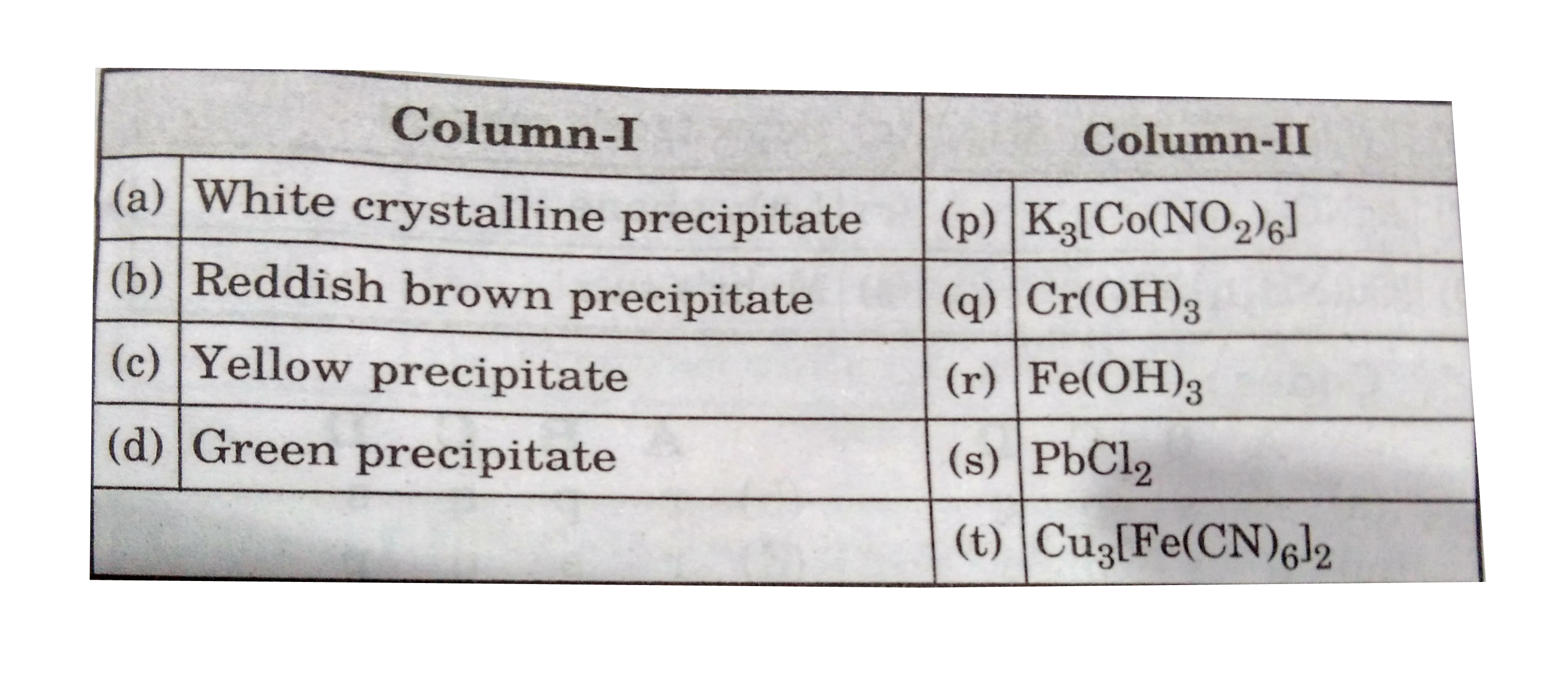Match the colour of the precipitates with their respective compounds (molecular formula) obtained in the analysis of different cations.

Text Solution
The correct Answer is:(a-s);(b-r);(c-p);(d-q,t)
|
Topper's Solved these Questions
- SALT ANALYSISBOOK - GRB PUBLICATIONCHAPTER - SALT ANALYSISEXERCISE - Subjective Type
69 Videos
- SALT ANALYSISBOOK - GRB PUBLICATIONCHAPTER - SALT ANALYSISEXERCISE - Comprehension 59
1 Videos
- S BLOCK ELEMENTSBOOK - GRB PUBLICATIONCHAPTER - S BLOCK ELEMENTSEXERCISE - SUBJECTIVE TYPE
9 Videos
- THERMODYNAMICSBOOK - GRB PUBLICATIONCHAPTER - THERMODYNAMICSEXERCISE - All Questions
704 Videos
Similar Questions
Knowledge Check
Molecular formula of a compound is
A2× its empirical formulaB3× its empirical formulaC4× its empirical formulaDn× its empirical formulaAmmonia is a compound with the molecular formula of:
AN2OBNaHCO3CNaOHDNH3A red colouration or precipitate is not obtained when:
AFe3+ reacts with potassium thiocyanateBFe2+ reacts with dimethylglyoxime.CHg2+ reacts with potassium iodide.DNone
A red colouration or precipitate is not obtained when:
View SolutionWhat is the difference between the empirical formula and molecular formula of a compound ?
View SolutionCompound with same molecular formula but different structure formula are called:
View SolutionCompounds having same molecular formula but different properties are called
View SolutionCompound with same molecular formula but different structure formula are called:
View Solution

